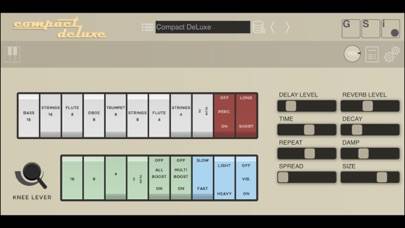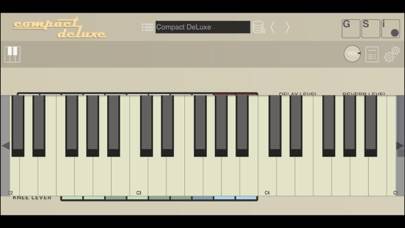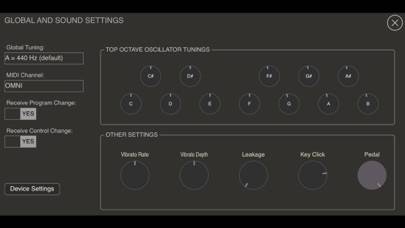How to Delete Compact DeLuxe
Published by: Genuine SoundwareRelease Date: May 16, 2023
Need to cancel your Compact DeLuxe subscription or delete the app? This guide provides step-by-step instructions for iPhones, Android devices, PCs (Windows/Mac), and PayPal. Remember to cancel at least 24 hours before your trial ends to avoid charges.
Guide to Cancel and Delete Compact DeLuxe
Table of Contents:



Compact DeLuxe Unsubscribe Instructions
Unsubscribing from Compact DeLuxe is easy. Follow these steps based on your device:
Canceling Compact DeLuxe Subscription on iPhone or iPad:
- Open the Settings app.
- Tap your name at the top to access your Apple ID.
- Tap Subscriptions.
- Here, you'll see all your active subscriptions. Find Compact DeLuxe and tap on it.
- Press Cancel Subscription.
Canceling Compact DeLuxe Subscription on Android:
- Open the Google Play Store.
- Ensure you’re signed in to the correct Google Account.
- Tap the Menu icon, then Subscriptions.
- Select Compact DeLuxe and tap Cancel Subscription.
Canceling Compact DeLuxe Subscription on Paypal:
- Log into your PayPal account.
- Click the Settings icon.
- Navigate to Payments, then Manage Automatic Payments.
- Find Compact DeLuxe and click Cancel.
Congratulations! Your Compact DeLuxe subscription is canceled, but you can still use the service until the end of the billing cycle.
How to Delete Compact DeLuxe - Genuine Soundware from Your iOS or Android
Delete Compact DeLuxe from iPhone or iPad:
To delete Compact DeLuxe from your iOS device, follow these steps:
- Locate the Compact DeLuxe app on your home screen.
- Long press the app until options appear.
- Select Remove App and confirm.
Delete Compact DeLuxe from Android:
- Find Compact DeLuxe in your app drawer or home screen.
- Long press the app and drag it to Uninstall.
- Confirm to uninstall.
Note: Deleting the app does not stop payments.
How to Get a Refund
If you think you’ve been wrongfully billed or want a refund for Compact DeLuxe, here’s what to do:
- Apple Support (for App Store purchases)
- Google Play Support (for Android purchases)
If you need help unsubscribing or further assistance, visit the Compact DeLuxe forum. Our community is ready to help!
What is Compact DeLuxe?
Victorinox sak mod compact deluxe build and the companion:
GSi Compact DeLuxe is a component modeling emulation of a Farfisa Compact DeLuxe.
INSTRUMENT BACKGROUND
Among the many transistor organs of the past, also known as "Combo Organs" (mostly because some of them also had a rhythm section and built-in speakers), the Farfisa Compact DeLuxe, along with its big brother the Compact Duo, was one of the most used organs at least in the european beat scene of the early and mid seventies. The electronic circuit of this kind of organ is relatively simple, at least on paper: rather than using a mechanical tone generator like the tonewheel models (Hammond and Pari), the transistor organs used a circuit called "Top Octave Synthesizer", TOS for short, responsible of the generation of 12 waveforms, one for each note of the last octave of the organ keyboard. The basic waveform was usually something halfway between a ramp and a triangular. The lower octaves were produced by means of "divider" circuits that could halve the frequency of each waveform, going so forth for each lower octave down to the pedalboard tones. At each division, something was lost and something was gained in terms of harmonic content. The result was that the same notes of different octaves had oscillators perfectly in sync, so all C notes were in sync, all C#, all D and so on. This same technique was also used in so-called "string machines" or "stringer keyboards" that emulated orchestral sounds (violins, trumpets, etc.) - see GSi's Electrorchestra.
The various registers in combo organs were produced by passing the raw waveforms through a filter bank, so some waveforms were low-pass filtered for bass-like sounds, some were high-pass filtered for violin-like sounds, etc. and some waveforms also went through more than one filter. This also adds some level of phase shifting between waveforms coming from different registers, the reason why the sum between, e.g. a Flute 8' and a Violin 8' isn't exactly the superimposition of the two waveforms, but something slightly different. And this is one of those underrated details that made the sound of some Combo Organs pretty unique.